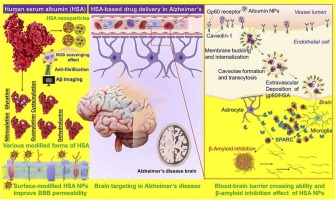
A Psychedelic Breakthrough: LSD Analogue Shows Potential Without Hallucinogenic Effects
In a crucial advancement toward unlocking the therapeutic possibilities of psychedelics for mental health treatment, scientists have created a new analogue of LSD that may deliver the advantageous effects of the substance—neural regeneration and enhanced cognitive functioning—without the characteristic psychedelic “trip.” The compound, named “JRT” after the lead researcher of the study, stands out as a pioneering solution in the effort to treat neuropsychiatric disorders like schizophrenia more safely and effectively.
The Research Behind JRT
Spearheaded by David Olson, a chemist and neuroscientist at the University of California, Davis, the research team began with a clear inquiry: Can the well-established neuroplasticity-enhancing properties of psychedelics be harnessed to treat illnesses such as schizophrenia without inducing disruptive hallucinations?
“The prefrontal cortex—the brain’s ‘conductor’—degrades in many neuropsychiatric disorders,” Olson explains. “Psychedelics from various chemical classifications are quite effective at promoting the growth of essential cortical neurons, but their use in schizophrenia is currently prohibited due to their hallucinogenic properties.”
To circumvent this challenge, the team utilized rational drug design principles. By analyzing past findings that indicated diminished hallucinogenic activity from simple atomic alterations in certain psychedelic structures, Olson’s laboratory investigated the possibility of selectively modifying atoms within the stable ergoline chemical framework of LSD. By merely exchanging a carbon atom for a nitrogen atom—a minor alteration that maintained the molecule’s overall structure and molecular weight—they synthesized JRT. This slight modification was chemically compared to “rotating the tires on a car”—insignificant visual changes, yet potentially transformative effects on function.
JRT: Structurally Similar, Functionally Unique
What sets JRT apart is that, to the naked eye—or even to proficient chemists—it appears nearly identical to LSD. It shares the same molecular weight and 3D shape. However, on a microscopic level, its interaction with the body is distinctly different.
When evaluated in vitro and in murine models, JRT demonstrated strong, selective activation of the 5-HT2A receptor—a serotonin receptor subtype pivotal in facilitating neural plasticity. Engaging this receptor encourages growth in cortical neurons, a vital therapeutic aim when addressing conditions like schizophrenia and depression.
However, in contrast to LSD, JRT did not significantly provoke hallucinogenic behaviors in mice, as indicated by the head twitch response assay—a widely recognized measure for psychedelic activity in rodent studies. Further investigation indicated that JRT binds more loosely and temporarily to the 5-HT2A receptor compared to LSD, which diminishes its ability to activate intense hallucinogenic signaling pathways.
Therapeutic Promise Without the Trip
The most thrilling aspect of this research is the potential of JRT to alleviate the negative and cognitive symptoms of schizophrenia—areas where existing treatments often fall short.
“We already possess medicines to manage hallucinations and delusions, the positive symptoms,” states Olson. “But cognitive impairments and negative symptoms—such as lack of motivation, muted emotions, and social withdrawal—are what hinder many individuals from fully engaging in society.”
JRT appears to boost neuroplasticity in the prefrontal cortex, enhancing behaviors in mice associated with these areas, without exacerbating psychotic features typically heightened by traditional psychedelics.
Still, Challenges Persist
Experts caution that while JRT’s profile is encouraging, further development and thorough testing in humans are crucial.
“Schizophrenia is an exceedingly complex disorder,” remarks Argel Aguilar-Valles, a neuroscientist at Carleton University in Canada. “While some aspects like cognitive rigidity may see improvement, we do not yet observe enhancements across all symptom categories—especially the positive symptoms.”
Additionally, the non-hallucinogenic attribute of JRT must be confirmed through clinical trials. Animal models cannot fully replicate the intricate human subjective experience of hallucinations or psychedelic states.
The Path Forward
Though there are still questions to resolve, the creation of JRT emphasizes the increasing capability of scientists to refine psychedelic compounds for more secure and targeted therapeutics. It illustrates the viability of designing analogues that maintain beneficial neuroplasticity-enhancing properties without the dangers associated with hallucinations.
Olson and his team are optimistic that a few more molecular modifications could pave the way for JRT or similar compounds to reach clinical usage. “We may even discover something superior to JRT for schizophrenia,” he states. “But as it stands, JRT holds immense promise for a variety of other applications as well.”
Conclusion
As mental health research advances into the age of precision psychedelics, JRT represents how contemporary medicinal chemistry and neuroscience can collaborate effectively. It brings hope to millions coping with debilitating psychiatric conditions and paves the way for therapies that enhance benefits while reducing risks—an essential progression in mental health treatment.